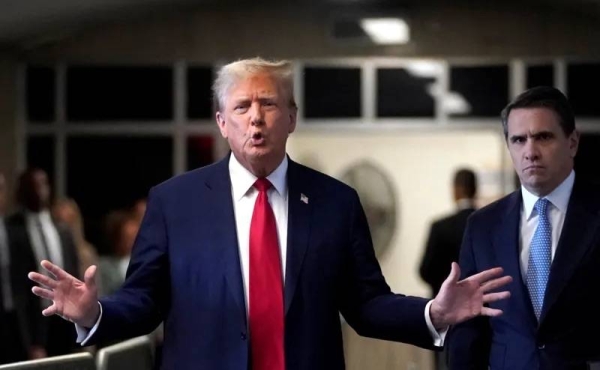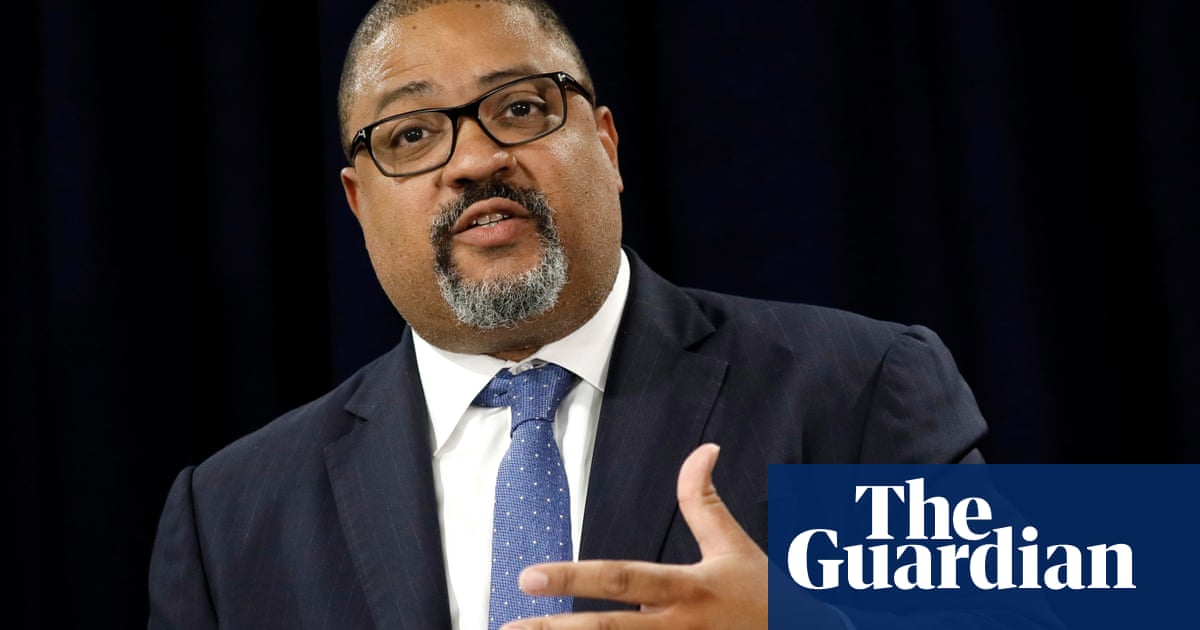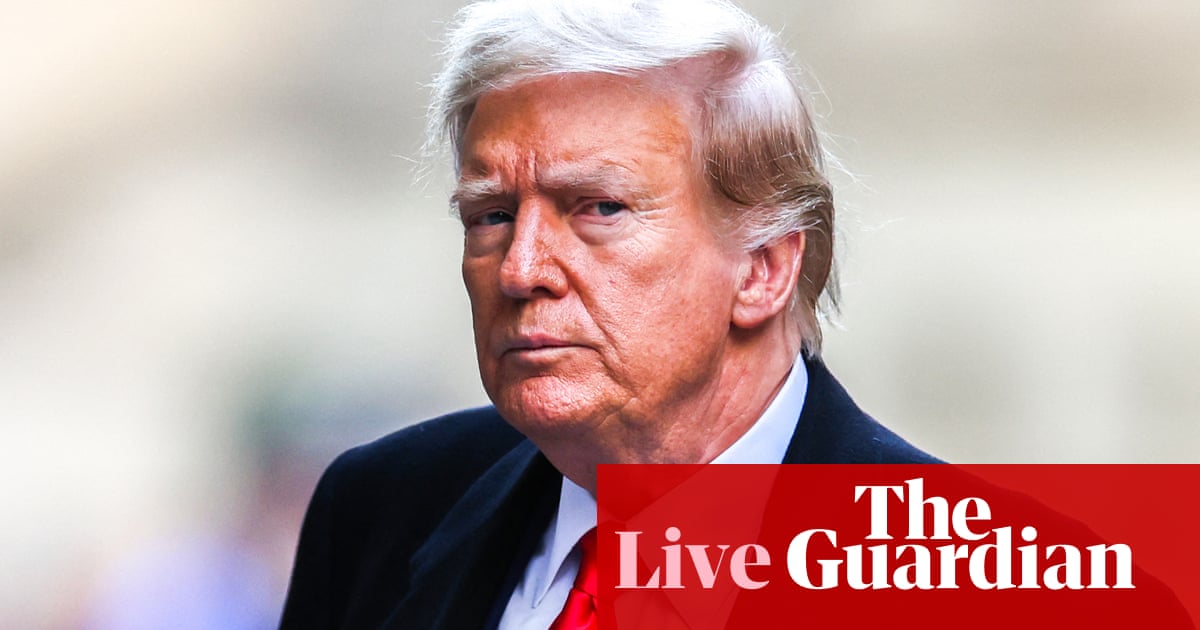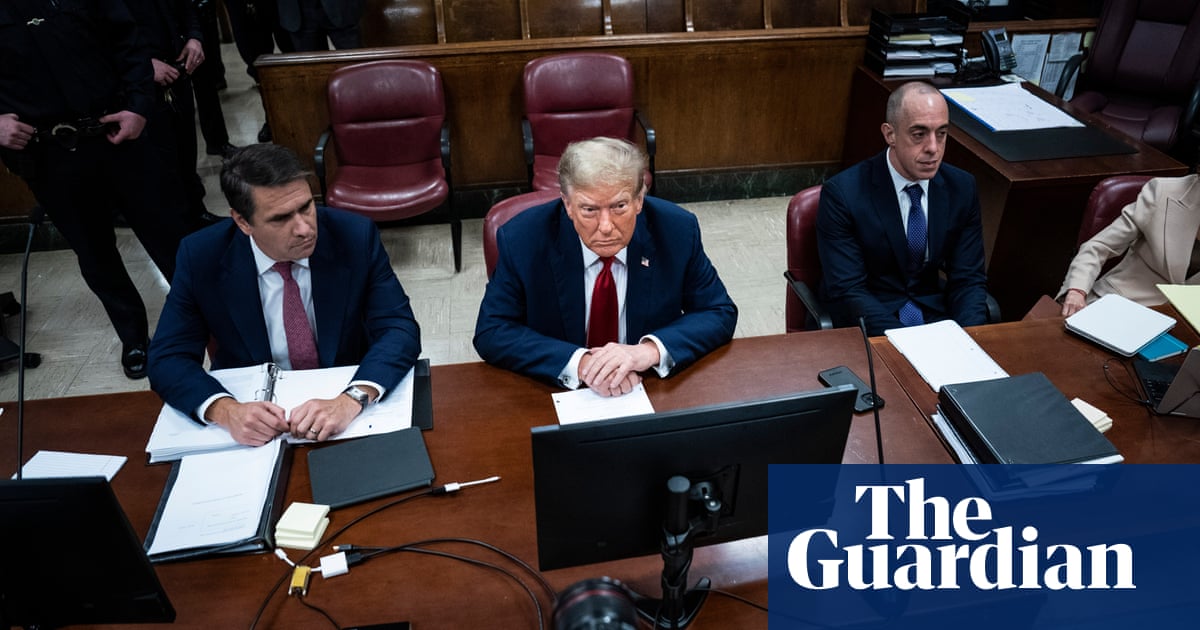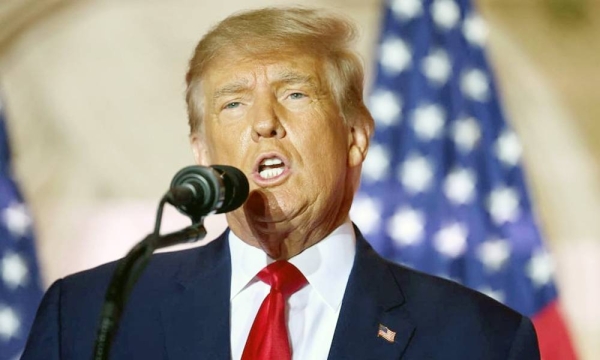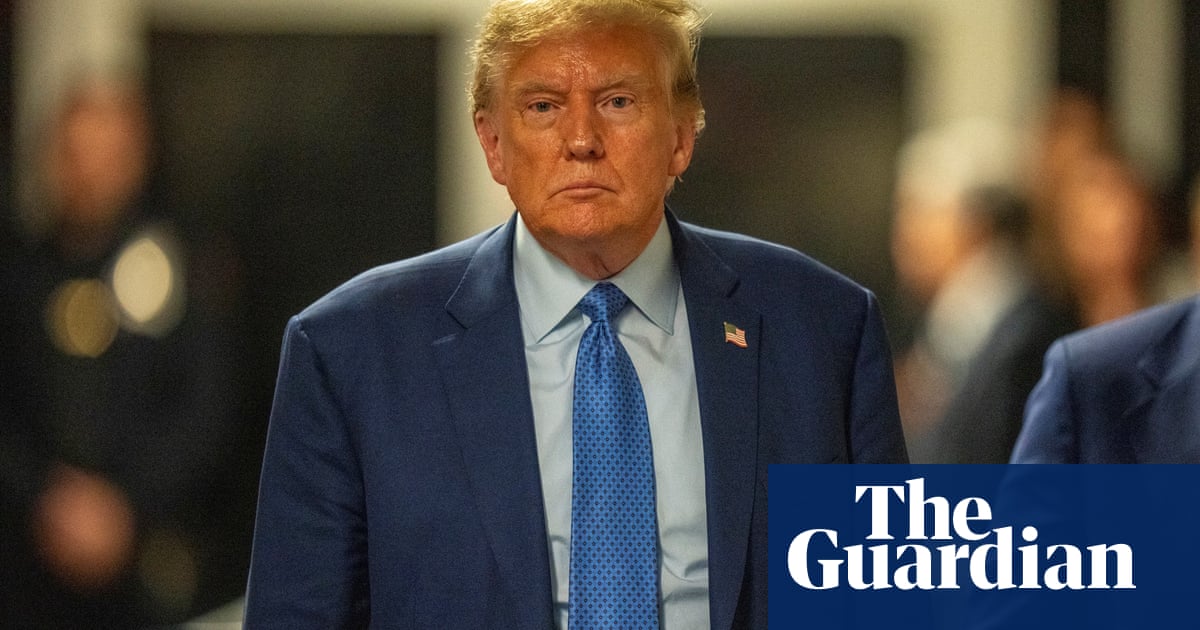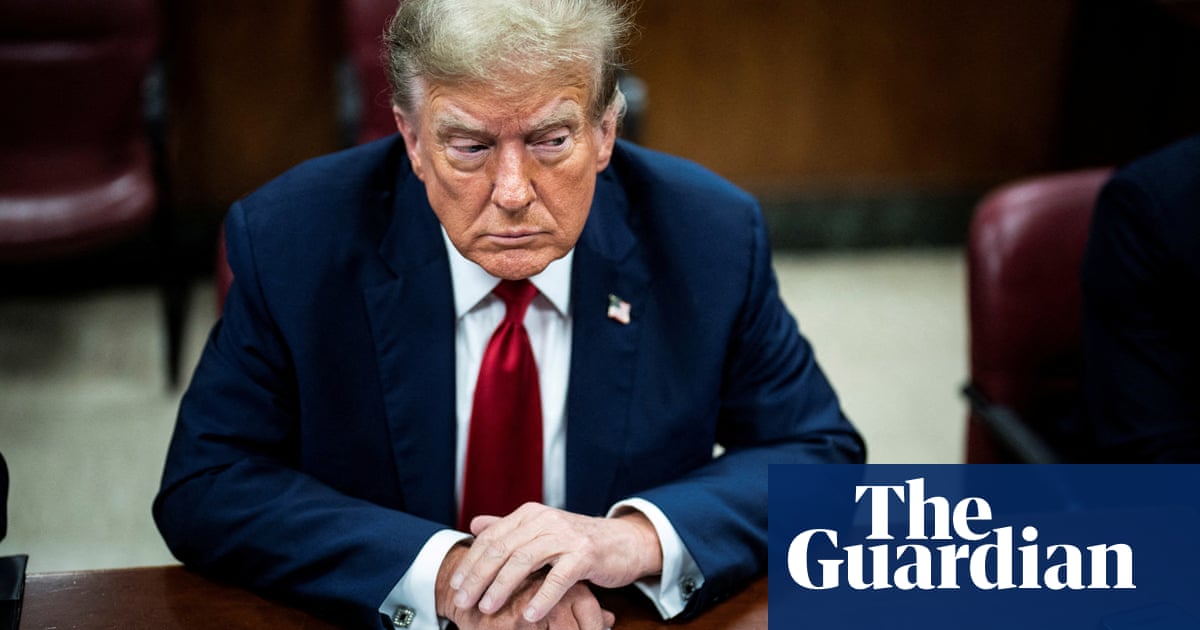
The first day of Donald Trump’s Manhattan hush-money trial came to a close on Monday afternoon with jury selection under way, marking a notable moment in American history: the first criminal trial of a current or former president.
Throughout the day, Trump appeared at Manhattan supreme court court in New York City flanked by his lawyers to face 34 felony counts involving a catch-and-kill scheme.
Trump had arrived at court for the start of jury selection shortly after 9am. Wearing his usual uniform of a navy suit and crimson tie, Trump spoke in the hallway before entering the courtroom in the morning.
“This is an assault on America. Nothing like this has ever happened before, there’s never been anything like it,” Trump told a group of reporters. He called it “political persecution”, “a case that should have never been brought” and “an assault on our country”.
“This is really an attack on a political opponent. That is all it is,” he added.
Trump’s trial concerns payments designed to keep his alleged affairs with the adult film star Stormy Daniels and the Playboy model Karen McDougal from seeing the light of day before the 2016 election. It plays out against a presidential race in which Trump is the almost certain Republican nominee to face Joe Biden in November.
Both sides – Trump’s defense team and the Manhattan prosecutors – spent hours disputing evidentiary issues, including whether the infamous Access Hollywood tape from 2016 in which Trump bragged that he could sexually assault women because of his fame could be shown.
The judge, Juan Merchan, reiterated that the tape could not be shown but that the words in the tape could be shown to jurors.
Merchan also reiterated his gag order banning Trump from attacking witnesses or family members of court officials – his own daughter included – and warned that Trump could be held in contempt and jailed if he violated the order.
The criminal case against Trump stems from an alleged scheme to cover up purported liaisons with Daniels and McDougal ahead of the 2016 general election. Prosecutors say Trump, who was indicted in spring 2023 on 34 counts of falsifying business records, participated in an alleged “catch-and-kill scheme” from August 2015 until December 2017 through his then lawyer, Michael Cohen. They said that he did so out of concern that the alleged extramarital encounters with Daniels and McDougal could harm Trump’s candidacy.
Cohen, who in 2018 pleaded guilty to federal charges for his involvement in that particular hush-money scheme, wired $130,000 to Daniels’s then attorney only 12 days before the election. Cohen shuttled this money through a shell company, which he established and funded at a bank in Manhattan, prosecutors said.
After Trump won the election, he paid Cohen back with a series of monthly checks. At first, these checks came from the Donald J Trump Revocable Trust – which was set up in New York to hold the president’s namesake company’s assets during his presidency. Payments to Cohen later came from Trump’s bank account, prosecutors said.
The Manhattan district attorney’s office said Trump provided 11 checks under illicit pretenses – and signed nine of them. The Trump Organization, prosecutors said, processed these checks “disguised as a payment for legal services rendered pursuant to a non-existent retainer agreement”.
By casting these payments as compensation for legal work, he “made and caused a false entry in the business records of an enterprise”, prosecutors said. Trump did so “with intent to defraud and intent to commit another crime and aid and conceal the commission thereof …”
With the scheme involving McDougal, the National Enquirer’s publisher, AMI, paid her $150,000. AMI reached out to Cohen after McDougal’s lawyer contacted the National Enquirer, in the hopes of selling her story about Trump. AMI brokered a deal with McDougal to purchase the “limited life rights” to her account of a relationship with “any married man”, according to a non-prosecution agreement between AMI and Manhattan federal prosecutors.
Trump, prosecutors said, told Cohen to repay AMI with cash. Cohen insisted that AMI be repaid via a shell company. In the end, AMI, owned by the Trump associate David Pecker, did not accept repayment after consulting with their counsel, the Manhattan district attorney’s office said.
In another concealment plot, Pecker came to learn that a former Trump Tower doorman was trying to sell information about a child Trump allegedly had out of wedlock. AMI paid him $30,000 for the story, prosecutors said.
The story did not check out – AMI did not investigate before issuing the payment – but Cohen told Pecker not to release the doorman from the agreement until after the election. Pecker said yes, prosecutors said.
Prosecutors said the arrangement between Trump, Cohen and Pecker stemmed from a summer 2015 meeting at Trump Tower about two months after he announced his candidacy. Pecker said he would help with Trump’s run and promised to be his “eyes and ears” by keeping him apprised of negative stories – and notifying Cohen before they surfaced.
Although Trump has carried himself with bluster throughout the court proceedings, the tediousness of the morning session – where evidentiary issues where hashed out and rehashed – might have gotten to him. Shortly before lunch, Trump appeared to be nodding off.
Jury selection did not start until about 2.30pm. Merchan swore in the first batch of 96 potential panelists.
With the selection process kicking off, the first criminal trial in history against a sitting or past president officially had officially started. The process could easily span more than a week.
Five hundred prospective panelists received summonses for jury service and as of Monday afternoon, there were several hundred at court waiting for the selection process to start. More than half of prospects in the first panel of 96 were excused after saying they could not be fair and impartial – about 50, per the pool report.
A minimum of nine more would-be jurors were excused after they raised their hand to indicate being incapable of serving for other reasons. In excess of 24 excused jurors were white women, per the pool report.




